In an interconnected world, a one-size-fits-all approach to customer support just doesn’t cut it. Customers expect personalized experiences that meet their unique needs, and language should not be a barrier in this quest for satisfaction. As globalization continues to shape markets, the demand for multilingual customer support has never been more critical.
Offering support in multiple languages not only caters to a diverse customer base but also lays the groundwork for greater customer loyalty and stronger market presence. Businesses that invest in multilingual support often find themselves ahead of the competition, tapping into new markets and creating lasting relationships with customers from different backgrounds.
In this article, we will explore how to effectively enhance your customer experience through multilingual customer support, highlighting the benefits, challenges, and best practices. With solutions like LiveAgent, you can seamlessly address your multilingual needs, ensuring that every customer feels valued, regardless of their language.
Table of Contents
- The importance of multilingual customer support
- Effective strategies for multilingual customer support
- Benefits of offering multilingual support
- Challenges of implementing multilingual support
- Optimizing support channels for multilingual assistance
- Best practices for implementing multilingual support
- Measuring the impact of multilingual support
- Future trends in multilingual customer support
- Conclusion
The importance of multilingual customer support
Multilingual customer support has become essential. Offering support in a consumer’s native language can significantly impact customer satisfaction and retention. In fact, 76% of consumers prefer to engage with brands that provide communication in their preferred language. This choice reflects a crucial demand that businesses must meet to maintain a competitive edge.
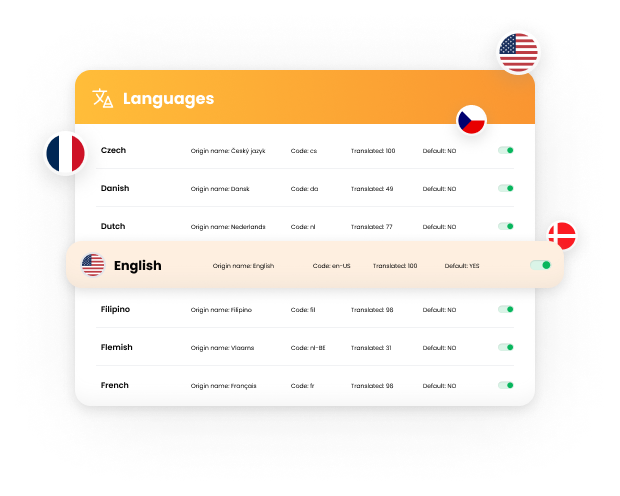
Providing multilingual support can lead to a remarkable increase in customer retention, with even a 5% rise potentially boosting profits by 25% to 95%. Customers value personalized, language-specific support as it shows a brand’s commitment to meeting their needs. Conversely, poor customer service causes 42% of customers to stop purchasing from a company, underlining the importance of effective communication.
Benefits of multilingual customer support:
- Increased customer retention
- Expanded global market reach
- Improved customer satisfaction
Businesses can expand their international market presence by offering multilingual support. This expansion not only helps in accessing diverse regional markets but also ensures survival in an increasingly competitive environment.
For a top-notch customer experience, consider using LiveAgent. It’s the ideal solution to overcome language barriers and provide efficient multilingual support.
Effective strategies for multilingual customer support
In today’s global market, providing multilingual customer support can be a game-changer. It helps break down language barriers and can significantly boost customer satisfaction and loyalty. Let’s explore effective strategies for implementing multilingual support, ensuring every international customer feels understood and valued.
Hiring Multilingual Staff
Hiring customer service agents fluent in various languages can personalize customer experiences. When agents speak the native language of their customers, they provide culturally relevant service, which improves customer interactions. Businesses should attract top multilingual talent by offering competitive salaries and clear growth paths.
Continuous training programs focused on language skills and customer service best practices are essential. This ensures that staff development aligns with business needs. Recognizing and rewarding high-performing agents can improve retention, contributing to a well-rounded multilingual support team. Local-language agents don’t just translate words—they bring cultural understanding that can lead to more positive interactions.
Leveraging AI-Driven translation tools
AI-powered translation tools can efficiently handle straightforward customer inquiries, freeing up human agents for complex issues. This boosts overall support efficiency. Integrating these tools with CRM systems provides real-time translations, helping agents respond swiftly and accurately. By using a robust translation management system (TMS), businesses can manage multilingual content seamlessly.
AI-powered chatbots offer instant translations, making communication accessible to a global audience. This technology ensures timely assistance, breaking through language barriers and increasing satisfaction rates. As we streamline translation workflows, customer interactions are quicker and more precise.
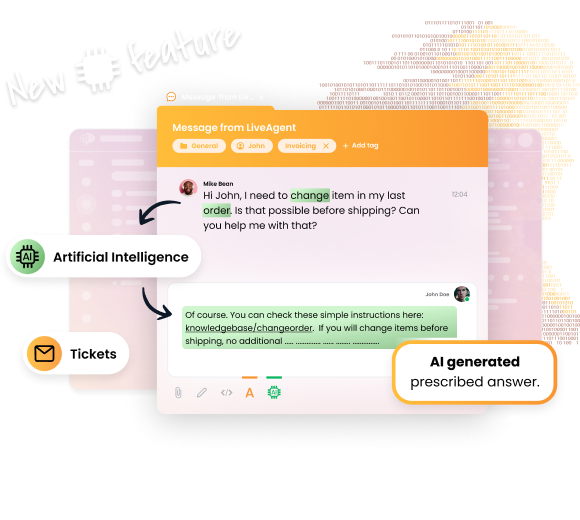
Providing comprehensive language training
Investing in ongoing language and customer service training programs improves the skills of multilingual support staff. Training should include diverse materials and resources, keeping agents informed of best practices. Monitoring agents’ proficiency is crucial for evaluating their effectiveness in assisting multilingual customers.
Rewarding outstanding performers helps maintain high service standards. By establishing diversity training programs, organizations can capitalize on the unique talents of their multicultural workforce. This leads to improved customer experiences and a more adaptive support team.
Ensuring cultural sensitivity in communication
Cultural sensitivity is vital in multilingual support. Hiring agents who are familiar with the cultural backgrounds of their customers enhances understanding and prevents miscommunication. Training teams on local customs and communication styles fosters culturally appropriate service. This is crucial, as different cultures have distinct communication preferences—such as levels of formality—that support teams need to adapt to.
Developing cross-cultural communication best practices is essential for engaging a diverse customer base effectively. Adapting support approaches to respect cultural differences can build trust and loyalty, enriching customer experiences. Such strategies enhance overall brand perception and foster long-lasting customer relationships.
| Strategy | Key Benefits |
|---|---|
| Hiring Multilingual Staff | Personalized interactions, cultural understanding |
| AI-Driven Tools | Increased efficiency, real-time translations |
| Comprehensive Training | Improved language skills, enhanced service quality |
| Cultural Sensitivity | Better communication, strengthened customer relationships |
By implementing these strategies, companies can improve customer satisfaction and loyalty across their international markets. For those looking to integrate a robust multilingual support system, LiveAgent is a top choice. It offers comprehensive solutions tailored to break through language barriers and enhance customer interactions.

Benefits of offering multilingual support
In a global marketplace, multilingual customer support is more than just a nice-to-have feature—it’s a vital component of effective business strategy. Offering support in multiple languages can transform customer interactions, increasing satisfaction and loyalty while broadening market reach. Let’s explore these benefits further:
Increased customer loyalty
Providing customer support in a customer’s native language greatly enhances their overall experience. When customers feel understood, their loyalty deepens significantly. Research shows that 70% of customers are more likely to stick with companies that communicate in their preferred language. This connection allows customers to express their concerns easily, fostering trust and engagement without language barriers. Multilingual support is an investment in building loyal customer bases, leading to repeat business and enthusiastic referrals.
Expanded market reach
A multilingual support strategy opens the door to global expansion. Businesses can tap into new markets and effectively retain customers by ensuring clear and inclusive communication. Brands that provide multilingual experiences gain a foothold in competitive environments, avoiding losing out on 29% of potential customers who might be alienated by language obstacles. Offering support across languages not only attracts diverse audiences but also leads to lasting relationships with customers from various cultural backgrounds.
Competitive advantage
Multilingual customer support offers a clear competitive advantage. By connecting with customers in their native languages, businesses enhance the customer experience significantly. A reported 70% of customers exhibit stronger retention when brands adopt their language. This practice builds trust and improves brand perception by showing cultural respect and valuing customer preferences. As businesses expand their language offerings, they differentiate themselves from competitors, gaining a strategic edge that underscores their commitment to accessibility and global customer care.
For businesses seeking to implement or enhance their multilingual support systems, LiveAgent provides an excellent solution. LiveAgent facilitates communication across various channels, offering real-time translation and accurate language support to improve customer satisfaction and retention. Adopting such a platform makes navigating language barriers seamless, ensuring that multilingual customer care is both effective and efficient.
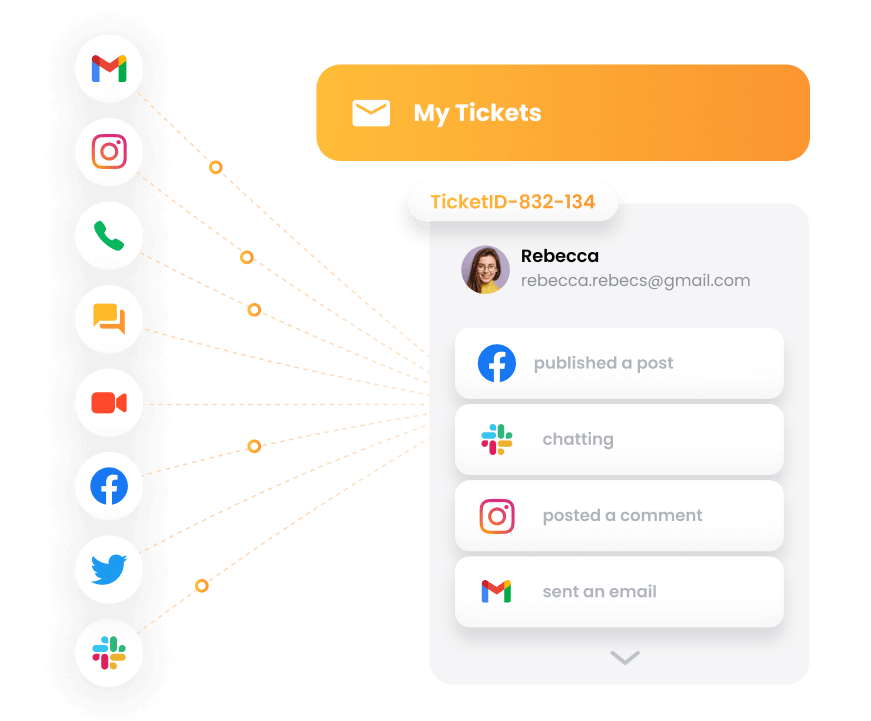
Challenges of implementing multilingual support
Implementing multilingual customer support is not an easy task. Companies need to adapt communication styles and content for different regions. This means customizing messages to fit local cultures and languages. One of the biggest challenges is hiring and training local-language agents. These agents need more than just language skills; they must also understand cultural nuances to assist effectively.
Language barriers can create misunderstandings, making customers view the service as poor if their questions aren’t answered correctly. Relying only on basic translation tools is not enough. Companies must develop comprehensive multilingual strategies that include both real-time translation tools and skilled human agents.
Moreover, businesses must adjust their working hours and support channels to suit different time zones. This is crucial for providing timely help to customers around the world.
Language Barriers
Language barriers can turn simple problems into frustrating experiences for customers. This is why effective multilingual customer support is so important. Many studies show that 75% of customers prefer to buy products in their native language. This preference highlights how language barriers can hinder sales and negotiations.
When companies offer multilingual support, customers feel more at ease expressing themselves. This comfort leads to higher satisfaction and loyalty. Effective communication in a customer’s native language boosts understanding, making them feel valued and trusted. By breaking down these barriers, businesses enable smoother interactions, reduce misunderstandings, and achieve quicker problem resolutions, leading to happier customers.
Hiring and training multilingual staff
To run successful multilingual support, businesses must focus on hiring and training the right people. Offering competitive pay and career growth prospects helps attract top talent. Continuous training programs that enhance language skills and customer service expertise are essential.
Hiring local language agents is a smart strategy. These agents bring an understanding of cultural nuances that can improve how they interact with customers. Recognizing and rewarding outstanding achievements among support staff can also aid in keeping them motivated and retained.
Training support agents in both language proficiency and cultural sensitivity is vital. This training helps them meet the expectations of customers from diverse backgrounds. Tools like real-time translation and a multilingual knowledge base can boost team efficiency, reducing the burden on human resources.
Cultural sensitivity issues
Different cultures have their own ways of communicating and different expectations. This can affect customer interactions in multilingual settings. Training teams to recognize and adapt to these cultural differences can prevent misunderstandings and improve service quality.
Cultural sensitivity is key in resolving conflicts and building good relationships with customers. This increases trust and loyalty to the brand. Knowing specific cultural preferences, holidays, and styles helps provide personalized service that enhances satisfaction.
Engaging with international customers and getting their feedback keeps support teams updated on cultural trends and sensitivities. This ongoing engagement ensures that service stays relevant and effective across cultures.
To navigate these challenges successfully, consider using LiveAgent, which excels in providing comprehensive solutions for multilingual customer support needs.
Enhance experience with multilingual support
Break language barriers and connect with customers worldwide. Provide seamless support in multiple languages to boost satisfaction and loyalty.
Optimizing support channels for multilingual assistance
By offering assistance in their preferred language, you improve customer satisfaction and foster customer loyalty. Implementing multilingual customer service mitigates language barriers and promotes an inclusive environment, subsequently boosting customer retention. Even a modest 5% increase in retention can enhance profits by anywhere from 25% to 95%.
For businesses, particularly in diverse markets like the US, prioritizing key languages based on customer demographics is vital. Approximately 8.2% of the US population faces challenges with English. By removing these language barriers, businesses can build stronger relationships with their customer base and ensure a personalized customer experience. Furthermore, integrating language translation technology into support platforms allows for round-the-clock multilingual assistance, addressing the needs of diverse audiences more effectively.
Live chat
Live chat is a preferred support channel for those seeking quick, real-time assistance in their native language. Integrating AI-powered chatbots with live chat can handle up to 90% of customer inquiries by detecting users’ preferred language and providing instant responses. This not only enhances customer engagement but also effectively increases sales and retention rates.

Businesses should consider offering multilingual live chat to foster genuine customer connections. Trained support agents can offer personalized interaction and resolve complex issues, setting live chat apart from the generic experience of chatbots. Implementing a multilingual live chat system ensures consistency in customer service across various languages and time zones, ultimately enhancing the customers’ experience and affinity towards the brand.
Email support
Email support is a vital channel for addressing complex issues that require detailed explanations. With translation software quickly and accurately translating emails, customers can receive support in their native language. This ensures a high-quality customer experience by improving metrics like response accuracy and satisfaction.
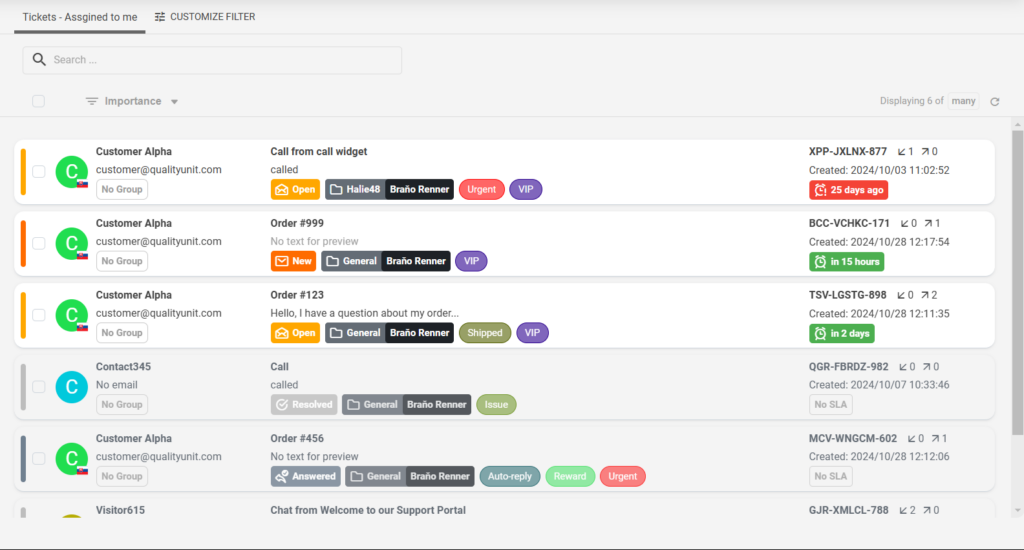
One advantage of email support is its flexibility; unlike real-time communication, it doesn’t require both parties to be available at the same time. This makes it ideal for international customers across different time zones. By utilizing pre-written responses and templates in multiple languages, agents can expedite communication while maintaining brand quality and consistency.
Social media engagement
Social media is an essential channel for customer service, especially for younger demographics like Gen Z, Millennials, and Gen X, who often prefer it for brand interactions. By providing multilingual support on these platforms, companies can significantly boost engagement and trust.
A well-trained multilingual support team can ensure quality and consistent engagement across languages on social media. Doing so respects customers’ language preferences and meets them where they prefer to communicate. This accessibility strengthens customer loyalty and enhances overall brand reputation in the international market.

Optimizing support channels with multilingual capabilities allows businesses to serve a global customer base effectively. Whether through live chat, email, or social media, embracing multilingual customer service can tear down language barriers, improve customer satisfaction, and ultimately, drive business success. For those in search of the best tools, LiveAgent offers seamless integration of multilingual support across various channels, ensuring that your business meets the diverse needs of your global audience.
Best practices for implementing multilingual support
The rise of global markets has made providing multilingual support essential. Hiring fluent customer service agents in the target languages ensures personalized, culturally appropriate responses. This enhances the customer experience and helps overcome language barriers. Support should be available across multiple channels such as phone, email, live chat, and social media. This integration meets today’s expectation for seamless service.
Integrating multilingual support into existing workflows requires a well-developed plan. This includes content translation and training staff on support tools. New technologies and automation can streamline tasks and boost productivity. They also reduce the workload on human agents. Conducting market research helps identify common languages among customers, guiding hiring practices and the configuration of your support software.
Regularly assessing customer needs
Understanding your customer base and their needs is vital. Regular analysis determines the level of support you can effectively provide. Monitoring customer sentiment in multiple languages helps spot issues early. This prevents them from escalating into bigger problems. Your customer care team can offer insights into communication challenges that may need attention.
Listening to customer feedback is key to continuous improvement. It helps refine procedures and training for better service delivery. Machine translation tools can analyze sentiments from social media and other online channels. This provides quick insights into how customers perceive your services, leading to adjusted support strategies.
Gathering feedback from diverse customers
Customer feedback is a goldmine for improving products and services. Incorporating language preferences can lead to better engagement and satisfaction. Analyzing support requests and soliciting feedback through surveys is essential. Websites that allow language choices not only provide useful data but also enhance satisfaction and loyalty among customers.
Understanding feedback from varied demographics allows businesses to tailor their offerings better. Effective multilingual support also enables the collection of diverse feedback. This guides service improvements and helps adapt strategies to meet customer needs better.
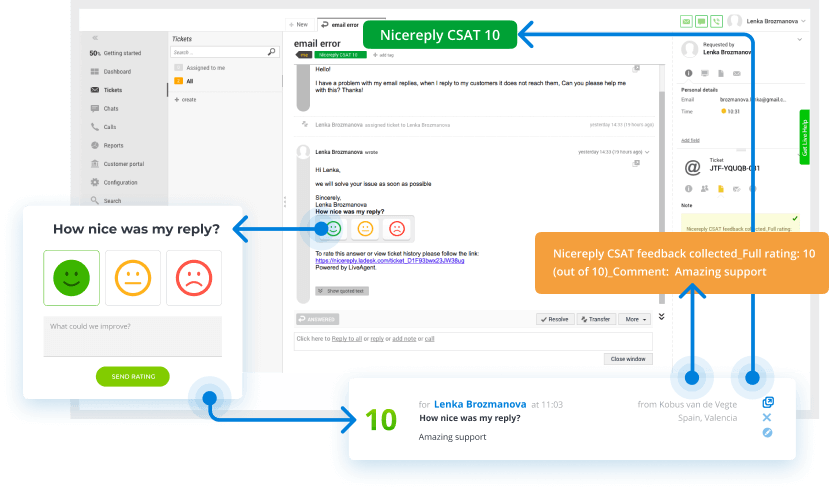
Keeping language resources updated
It’s crucial to keep language resources current. Analytics tools can monitor the languages of support tickets. This helps anticipate and respond to changing customer needs by efficiently allocating resources. Hiring native speakers and subject matter experts for translations ensures content resonates culturally with its audience.
A quality assurance process maintains consistency across languages. It prevents misunderstandings that could harm customer experience. Centralized knowledge base software is vital for updating resources and maintaining uniform messaging. AI-powered translation tools, combined with human review, enhance the quality of translations. They reduce errors and provide nuanced understanding of industry-specific terms, leading to customer satisfaction.
By following these best practices, businesses can enhance multilingual customer support and boost customer loyalty. Tools like LiveAgent, which offer AI-powered multilingual capabilities, can effectively handle your customer support needs, ensuring high-quality and efficient interactions across various languages.
Measuring the impact of multilingual support
Research shows that just a 5% increase in retention can boost profits by 25% to 95%. Customers feel more satisfied and engaged with brands that speak their language, even improving pre-purchase support, which attracts undecided buyers. Companies offering multilingual support gain a competitive edge, resulting in better business performance and customer loyalty.
Customer satisfaction metrics
To enhance customer satisfaction, it is vital to monitor key metrics such as response times and satisfaction scores. AI-driven systems, like those implemented by LiveAgent, can elevate satisfaction scores. Identifying and addressing language gaps ensures continuous support optimization. Personalizing service by understanding a customer’s culture and communication preferences can further boost satisfaction scores. LiveAgent’s analytics tools offer insights to refine your support operations, making sure they align with customer expectations.
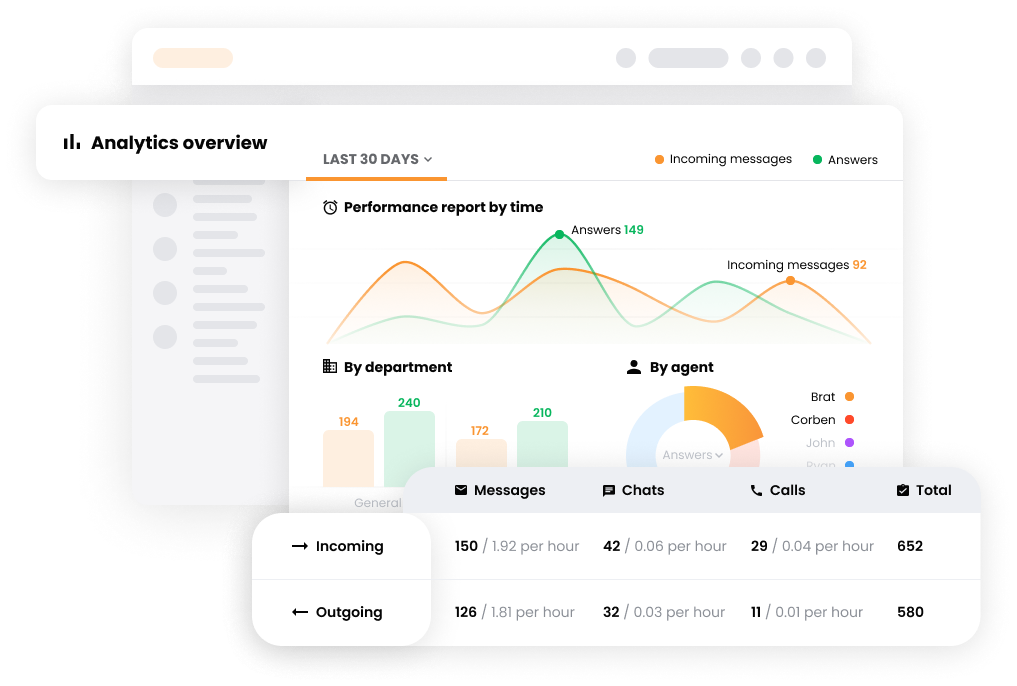
Retention rates
Offering support in a customer’s preferred language greatly impacts retention. Around 70% of consumers would switch brands for native language support, underscoring its importance. Multilingual services reduce churn rates as customers feel understood and valued. LiveAgent excels in providing personalized support that fosters loyalty and retention. By investing in multilingual support, businesses not only build strong customer relationships but also grow sustainably.
Business growth indicators
For global businesses, multilingual customer support is essential to boost satisfaction and loyalty, leading to growth opportunities. Effective communication in multiple languages creates a market advantage, especially in international markets. Engaging with a diverse customer base requires strategic customer service enhancements. Listening to feedback and constantly improving are vital business growth indicators. Anticipating expansion into non-English speaking regions highlights the need for multilingual support. By leveraging LiveAgent’s comprehensive multilingual tools, businesses can easily cater to new markets, driving sales and enhancing customer experiences.
Future trends in multilingual customer support
The future of multilingual customer support is bright and dynamic. Driven by AI and machine learning, businesses can now offer real-time translation, bridging language barriers effortlessly. As companies venture into global markets, there’s a surge in demand for support in less commonly spoken languages. This expansion requires businesses to adopt omnichannel strategies, like chat, email, and phone support, to cater to international customers.
Omnichannel support not only enhances customer satisfaction but also offers flexibility. Customers can choose their preferred communication method, leading to a personalized experience. AI-powered tools for high-volume interactions help maintain cost-efficiency while ensuring quality. This allows human agents to focus on complex issues where their expertise is most needed.
Here’s a glance at the future trends:
| Trend | Benefit |
|---|---|
| Real-time Translation | Breaks language barriers |
| Omnichannel Support | Offers convenience and flexibility |
| AI-powered Interactions | Balances cost-efficiency with quality |
| Focus on Less Spoken Languages | Captures wider customer base |
Integrating these technologies, as seen in platforms like LiveAgent, guarantees 24/7 multilingual support through efficient translation services. This holistic approach strengthens customer loyalty and enhances overall customer experience across global markets.
Enhance experience with multilingual support
Break language barriers and connect with customers worldwide. Provide seamless support in multiple languages to boost satisfaction and loyalty.
Conclusion
Multilingual customer support is a powerful tool for enhancing customer retention and boosting profits. With a simple 5% increase in support effectiveness, businesses can see profit growth between 25% to 95%. By providing assistance in their native languages, companies build stronger loyalty among 70% of customers. This loyalty arises because people appreciate when brands accommodate their preferred language.
Moreover, 76% of customers prefer companies that offer information in their native languages. Thus, businesses with multilingual support have a clear competitive edge. For example, Airbnb saw a 40% rise in international bookings after expanding support to 62 languages.
To execute an effective multilingual strategy, businesses need more than just translations. They must integrate cultural expertise and sensitivity. This ensures that every interaction is smooth and inclusive, catering to diverse communication styles.
Consider using a comprehensive solution like LiveAgent and try our 30-day free trial, which excels in offering multilingual support. It aids in breaking down language barriers, enhancing customer experience, and reaching a broader international market. These tools allow you to provide excellent, culturally aware service and ultimately retain loyal, satisfied customers.
Share this article
LiveAgent monthly updates: February edition
Explore LiveAgent's February updates: AI Chatbot preview, refined ticket design, security enhancements & fixes for seamless support!"

 Български
Български  Čeština
Čeština  Dansk
Dansk  Deutsch
Deutsch  Eesti
Eesti  Español
Español  Français
Français  Ελληνικα
Ελληνικα  Hrvatski
Hrvatski  Italiano
Italiano  Latviešu
Latviešu  Lietuviškai
Lietuviškai  Magyar
Magyar  Nederlands
Nederlands  Norsk bokmål
Norsk bokmål  Polski
Polski  Română
Română  Русский
Русский  Slovenčina
Slovenčina  Slovenščina
Slovenščina  简体中文
简体中文  Tagalog
Tagalog  Tiếng Việt
Tiếng Việt  العربية
العربية  Português
Português 








